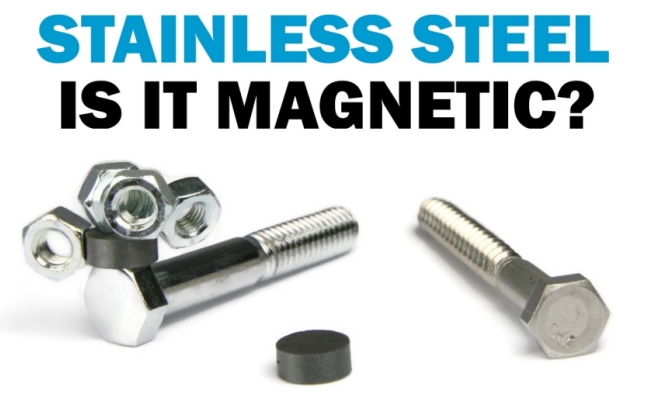What Is Stainless Steel?
Stainless steel is a substance composed of no less than 10.5% chromium, along with little iron, silicon, carbon, nitrogen, and manganese. It is primarily known for its excellent corrosion resistance and high strength, a key consideration for most applications.
Types of Stainless Steel
Based on its metallurgical properties and microstructures, stainless steel can be divided into five categories:
Austenitic stainless steels, including 304, 321, 310, 316, etc.
Ferritic stainless steels, including 409, 430, 439, etc.
Martensitic stainless steels, including 410, 420, 440, etc.
Duplex stainless steels.
Precipitation-hardened steels.
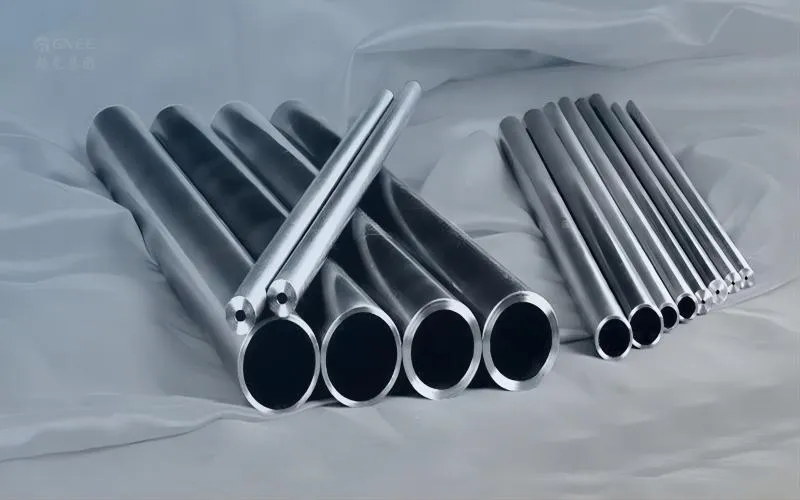
What Makes Stainless Steel Magnetic?
For stainless steel to be magnetic, it has to meet certain requirements:
1. The alloy must have iron in its chemical structure. This makes stainless steel magnetic.
2. The crystal structure of the alloy must be arranged in a martensitic or ferritic structure. If stainless steel is mostly comprised of an austenite structure, then it will not be magnetic.
Besides, corrosion resistance has no bearing on magnetism. In stainless steels, corrosion resistance is dependent on the concentration of chromium (and sometimes molybdenum). The more of each, the better the corrosion resistance.
Which Types of Stainless Steel are Magnetic?
Of the various types of stainless steel, it is ferritic, martensitic, duplex, and precipitation-hardening stainless steels that are most inclined to exhibit magnetic properties. Contrarily, austenitic stainless steel is not magnetic but can become partially magnetic with cold forming.
Ferritic Stainless Steels. Ferritic stainless steel is commonly magnetic. This type of stainless steel contains a maximum amount of ferrite in its chemical structure, which is a composite of iron and additional elements. The crystals of ferrite and iron make this type of stainless steel magnetic. However, it is also important to note that some stainless steels with ferrite have a weak magnetic pull.
Martensitic Stainless Steels. Many of the martensitic stainless steel grades are magnetic. This is due to iron being the main component in its chemical composition, and it can be ferromagnetic.
Duplex Stainless Steels. Duplex stainless steels are most commonly magnetic because they include a blend of ferrite and austenite. The abundant amount of ferrite is mixed in duplex steel which makes it magnetic. But, duplex stainless steels have a higher austenite blend than ferritic steels, which can be slightly weak magnetic.
Precipitation Hardening Stainless Steels. It is mainly used for hardened edge (cutting) applications. The material becomes magnetic after hardening.
Austenitic Stainless Steels. Austenitic stainless steels have a maximum quantity of austenite which gives them essentially non-magnetic properties. Although some of the alloys, such as grades 304 and 316, contain iron, these materials are non-ferromagnetic. They can be made partially magnetic through special thermal treatment or work-hardening which can form ferrite in some locations. This is why, austenitic grades display vary slight magnetism on any edge that has been mechanically worked, such as the edge of a sheet.
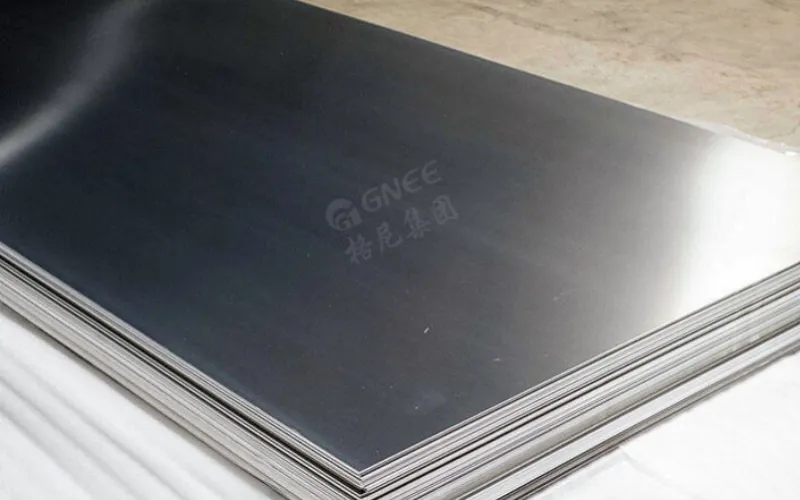
How To Eliminate the Magnetism of Stainless Steel?
There are three ways to eliminate the magnetism of stainless steel, including:
1. Strictly control chemical ingredients.
During production, the Cr/Ni value in stainless steel can be reduced, and then the Ni and Mn contents can be increased. In general, the higher the nickel content in the alloy, the less magnetic it will be.
2. High-temperature solution treatment.
The stable austenite structure can be restored through high-temperature solid solution treatment (a heat treatment process in which the alloy is heated to a high-temperature single-phase zone and maintained at a constant temperature to fully dissolve the excess phase into the solid solution and then rapidly cooled to obtain a supersaturated solid solution), thereby eliminating magnetism.
The specific method is to heat the stainless steel to about 1050°C and use cold water or quenching method to cause the carbides in the stainless steel to carburize.
3. Apply alternating attenuating magnetic field.
It can be demagnetized by turning on the DC welding machine: clamp one of the welding tongs on one end of the material, and then use another welding tong to clamp the opposite end of the material. The current gradually decreases and can be divided into several times to carry out. But the time cannot be too long and the number of times cannot be too many, otherwise, it is easy to burn the welding machine.
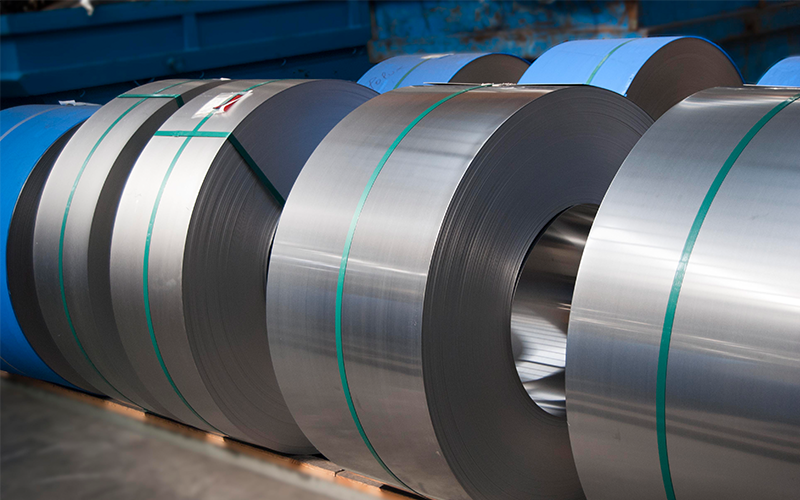
Frequently Asked Questions about Stainless Steel Magnetism
Here are some questions about stainless steel magnetism you can take a look at.
1. How To Test the Magnetic Property of Stainless Steel?
The magnetic properties of stainless steel can be tested using a magnet. When a magnet is brought close to stainless steel, it will be attracted to magnetic stainless steel but not to non-magnetic stainless steel. However, there may still be some magnetic attraction even with non-magnetic stainless steel due to impurities or surface contaminants.
2. How Does Stainless Steel Magnetism Work?
Magnetism occurs primarily due to the uneven distribution of electrons in atoms of certain metal elements, including iron. A shift occurs within the said atom, creating magnetic dipoles – a by-product of the irregular rotation of electrons.
3. Why Does Magnetism In Stainless Steels Matter?
Magnetism affects the performance and intended use of the material during application. Throughout fabrications and other processes like welding, magnetic materials can complicate the processes being carried out. Magnetic materials can also cause electric currents to behave differently.
In addition, if a material needs to be quickly sorted from other materials, then having one material be magnetic simplifies the sorting process.
4. Will Stainless Steel Act as a Magnetic Shield?
Yes, stainless steel can act as a magnetic shield, however, probably not in the way you are thinking. Magnetic “shields” don’t block magnetic fields, they redirect it.
5. Will Paint Reduce the Pull Force of a Magnet to a Piece of Stainless Steel?
Yes. This is true for any steel, not just stainless steel.
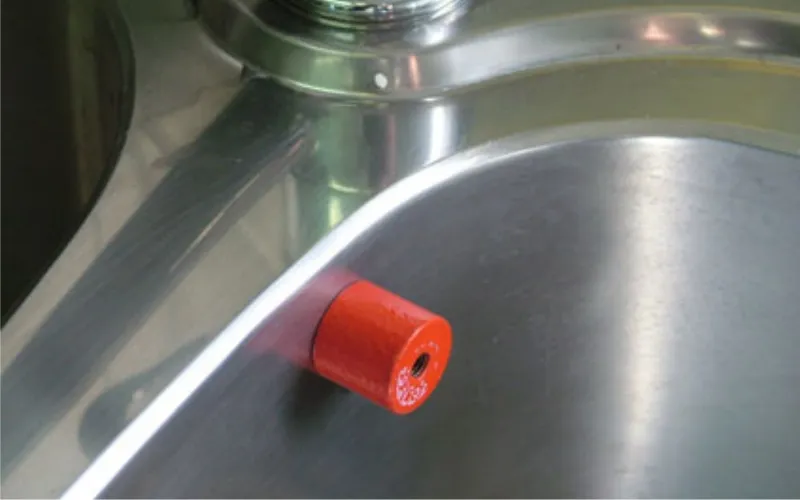
Gnee Steel — A High-quality Steel Fabricator and Supplier
Gnee Steel is a large special steel manufacturer and supplier in China. We are metal experts and have been providing quality customer service and products since 2008.
At Gnee Metal, we supply a wide range of metals for a variety of applications. Our products/stock includes stainless steel, alloy steel, spring steel, tool steel, high-speed steel, mold steel, and nickel alloy. Our hot rolled and cold rolled steel is available in a wide range of shapes including bars, tubes, coils, sheets, and plates. We can cut metal to your exact specifications.
Send your inquiry to us and get a free quotation today!


